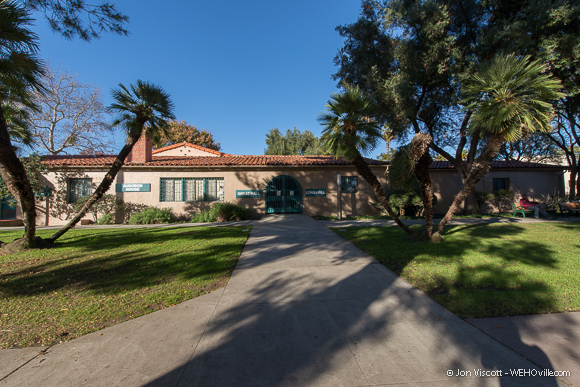
What is it about our community’s past that clouds the judgment of the vocal few when our future footprint is being considered? I am frequently baffled by the over-zealous fervor for all things old. Buildings deemed “old” are embraced with an irrational nostalgia, regardless of whether they represent a notable community pattern, have architectural distinction or constitute cultural relevance.
All too often, preserving these structures or sites is seen as protecting our heritage. Such advocacy often serves an individual agenda and is employed as a defensive move to ward against potential development. Viewing preservation through the lens of nostalgia ultimately results in structures and sites that lack historic significance or meaningful connection to our community. Is this what we really want for West Hollywood?
As a professional with training in preservation and a former Historic Preservation Commissioner, I approach preservation with a broad perspective that has one eye on conservation and the other on evolution. I have come to understand that preservation is, for the most part, a subjectively objective strategy.
It also is a misunderstood and elusive concept often used as a community planning tool intended to strengthen the fabric of a neighborhood while preserving its past — two concepts that are not mutually exclusive.
For example, with old and new side by side, the fabric of a West Hollywood neighborhood illustrates the foundation of its past while allowing the footprint we create today to be our legacy for the future. Our heritage should not only represent the early 20th century, but also the early 21st century. This means allowing our community to evolve without sacrificing the significance of the past, but also NOT letting our relevance be forfeited by it.
Some community advocates, however, miss that point by focusing only on preserving the past without considering the future.
Nostalgia should not be a consideration since it is rooted in sentimentality and framed by personal bias. Ideally, a historic designation should be a collective gesture steeped in community wide significance.
Yet nostalgia and fear can distract us from the real purpose of conservation and diminish legitimate preservation efforts. Our buildings and parks have become pawns in efforts to halt change and stymie further evolution of our community. The unbridled passion for preservation sometimes stems from the sentimental (and sometimes embellished) yearning of a neighborhood’s few and doesn’t represent the community’s many.
In considering preservation, one needs to ask several fundamental questions.
First, what is the context in which a particular structure or site was built or gained distinction? Identifying the set of circumstances that led to an existing condition is key and the basis for starting a thoughtful and reasoned debate on the merits of any particular preservation proposal.
What is its connection to the community in the past as well as today? A designation of a Cape Cod house surrounded by California bungalows on the basis that it is the “last remaining specimen,” only serves to achieve an architectural petting zoo. Finally, one must ask if the subject site benefits the public more as it is than if it were redeveloped. This is one of the most difficult questions because public benefit is highly subjective and inherently intangible.
There is no place for an artificial sense of history in our community and therefore it should not influence our discussions on preservation or development. Several years ago at a neighborhood meeting where a new multi-family housing project was being proposed, several residents made a request “to design something historical.”
Granted, the design strategy presented was riddled with a number of deficiencies. But designing or building in an “historical” fashion is a hollow gesture that is not only irrelevant to our time, but also lacks any authenticity and meaning.
Nostalgia all too often creeps into the psyche of some and shrouds an objectivity about which community elements need preserving and prevent us from including a legacy of the present.
The continuum of our history, not just the past, is what makes West Hollywood a special place, and one that provides an authentic human experience where residential neighborhoods and business districts are always relevant. Cities are an amalgamation of our past accomplishments, our present capacity and our future aspirations.
Nostalgia may have a place in saving a childhood toy or hanging a family picture, but it should not be central when discussing the future role and shape of cities today.

I find this piece rather harsh and I’m glad that the author is not on our Historic Preservation commission anymore. obviously there has to be a balance and not everything old is worth preserving. agreed. but I remember the “preservation-is-nostalgia” slogan from east germany where it was official policy and has prevented restoration of entire residential neighborhoods in east berlin to make room for “modern” structures for the future. a couple of decades later the “modern” looks oddly outdated and nobody wants to live in those areas if they can avoid it whereas the structures rooted in history that had… Read more »
It is likely that the two conjoined structures known as Great Hall/Long Hall in Plummer Park, will be designated and placed on the National Trust’s Register of Historic Places which will, thankfully, put an end to the “nostalgia” and “personal bias” discussion. Prior to the dubious need for underground parking, the City of West Hollywood was calling both the WPA structures and Fiesta Hall, cultural resources. CEQA’s ruling was “to alter or demolish” them would cause a “significant adverse impact” for which there was no mitigation. I have heard Mr. Yeber’s “architectural petting zoo” line before and I find it… Read more »
“Nostalgia should not be a consideration since it is rooted in sentimentality and framed by personal bias.” Perfect example is ‘Protect Plummer Park’. Thank you Marc for your objectivity and unbiased observations and foresight for taking West Hollywood into the 21st century.
surely you are referring to the El Mirador?